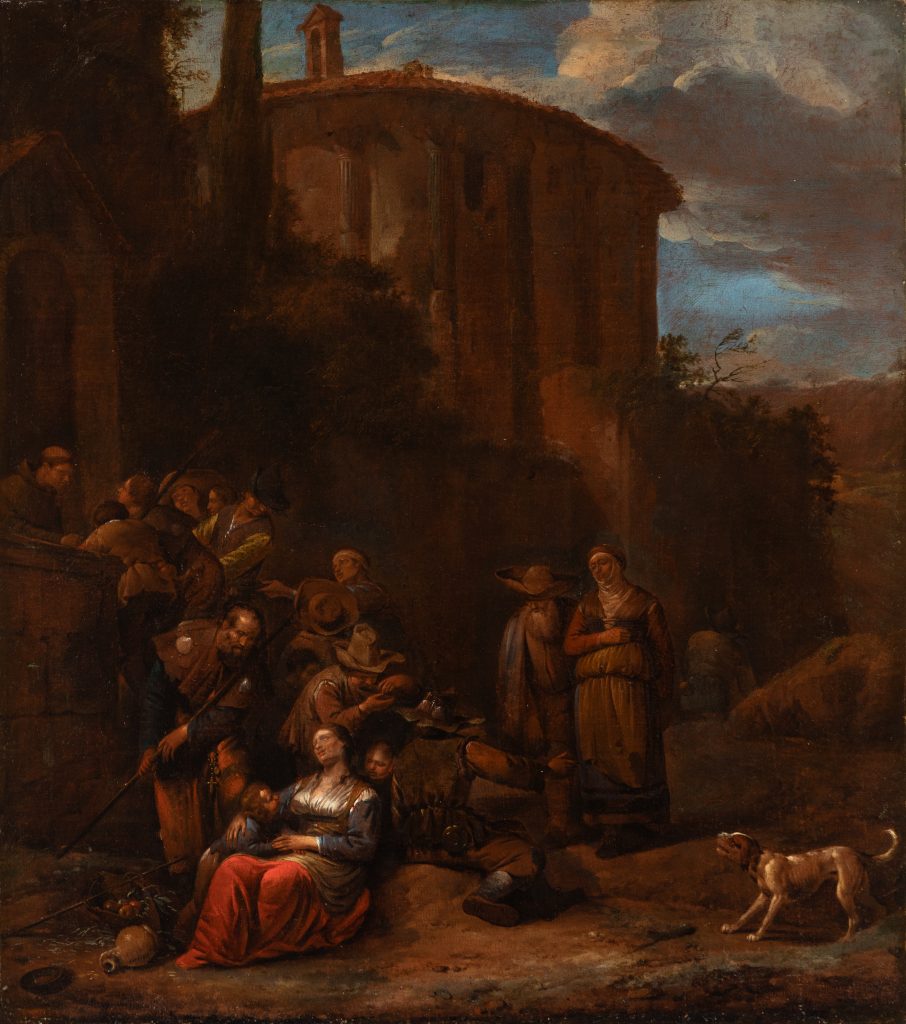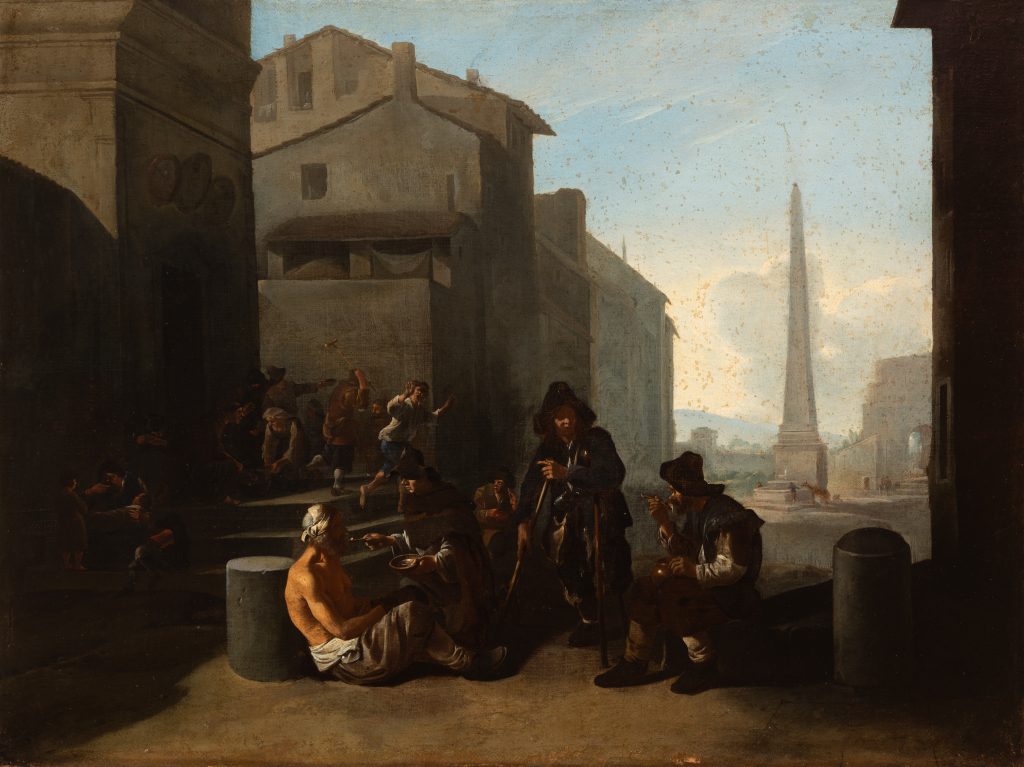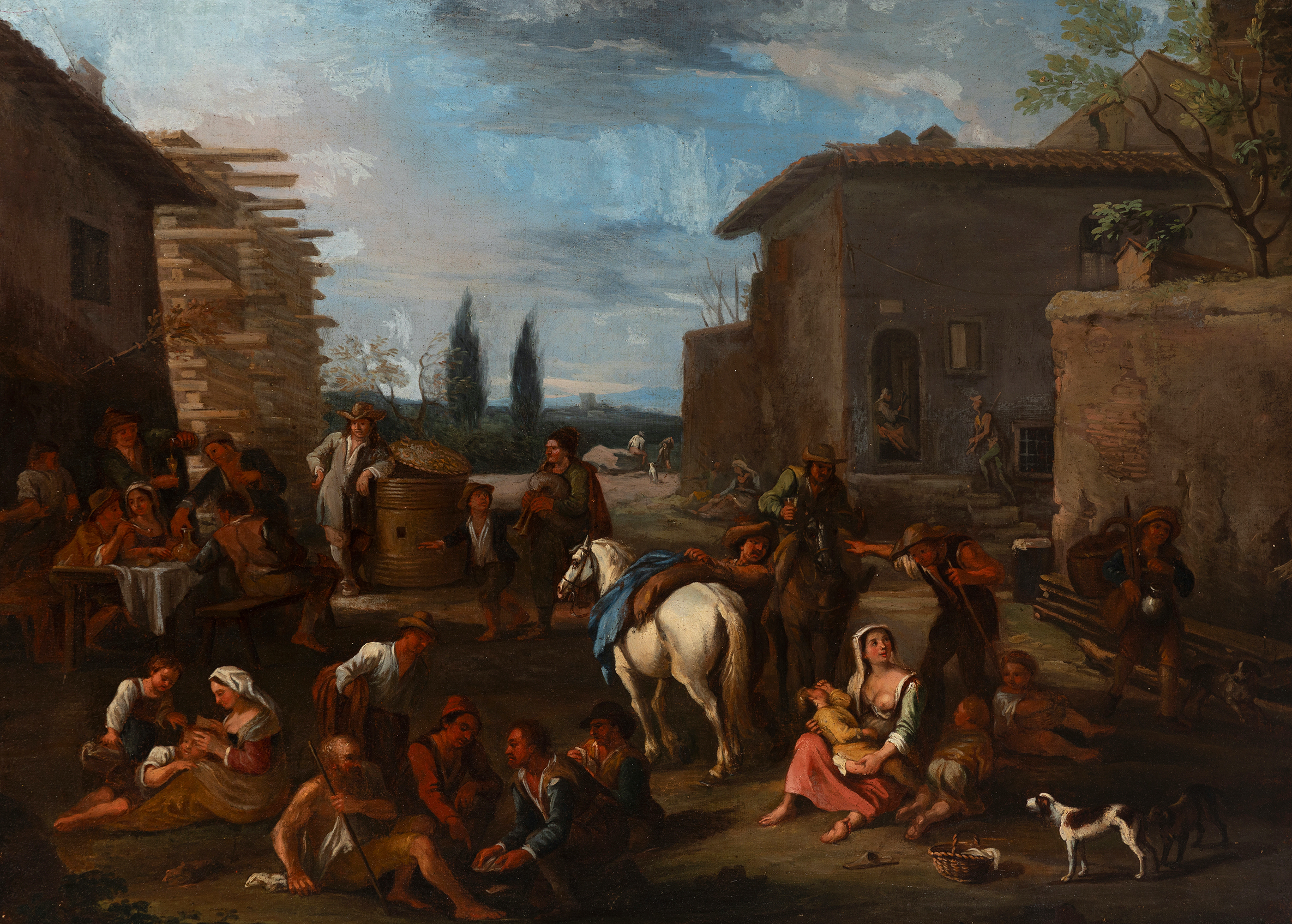A Rome that attracted artists from all over Europe
During the 16th and 17th centuries, Rome became the great artistic center of Europe. Its imperial legacy, the monumental ruins that emerged among the streets, and the splendor of the Baroque promoted by the Catholic Church attracted creators from all corners of the continent. Among them, a group of Flemish and Dutch painters found in the eternal city not only inspiration, but also community: the Bentveughels.
Who were the Bentveughels?


The Bentveughels – whose name means “crooked birds” or “strange birds” in Dutch – were an informal artistic society composed of young artists from Flanders and the Netherlands who settled in Rome between the 17th and 18th centuries. United by linguistic and cultural affinity and a desire to integrate into the complex Roman art scene, these painters created a network of mutual support and a common identity in a foreign land.
Their symbolic headquarters was a place steeped in history: the church of Santa Constanza, formerly a Roman mausoleum, where they gathered to welcome new members in ceremonies evoking ancient rituals. These initiations included banquets, toasts and symbolic games that mimicked the mysteries of Mithras or classical bacchanals. Through this ritual atmosphere, the Bentveughels distinguished themselves both for their art and for their unique understanding of artistic fraternity.
An art between ruins and daily life
The Bentveughels’ work reflects both their fascination with Rome and their view of urban life beyond the palaces. His paintings are often set in scenes where the majesty of the past coexists with the poverty of the present: ancient ruins transformed into makeshift dwellings, pagan temples next to slums, or classical columns emerging among street markets.
A notable example is the painting attributed to Pieter van Bloemen in which the misnamed temple of Vesta, in the Boarian forum, appears aged, grayish, inhabited and degraded, but still majestic. This mixture between the splendor of the past and the rawness of the present defines much of the visual language of the group.
The people as protagonists: the Bamboccianti genre is born

One of the Bentveughels’ most distinctive contributions to art was their depiction of the common people. Rather than focusing on nobles or religious subjects, many of these artists chose to portray beggars, the elderly, prostitutes, ragged children, or the insane. This crude yet compassionate vision gave rise to a subgenre known as Bamboccianti, a name derived from the nickname of one of its members, Pieter van Laer(Il Bamboccio).
Although these paintings sometimes had a satirical tone, more often they offered a moral or humanistic reading: a mother feeding her children with leftovers, a beggar receiving alms with dignity, or a street scene charged with truth. The Bentveughels’ art did not romanticize poverty, but it did present it as an essential part of the human experience.
A current and modern legacy
Despite their popular or even grotesque appearance in certain cases, the works of the Bentveughels demonstrate an extraordinary social sensitivity, an acute observation of the world and an unquestionable technical mastery. Their paintings blend history, social criticism and a deep connection with the everyday. Perhaps for this reason, they continue to arouse interest among collectors and scholars today.
Moreover, their understanding of the artistic community-as a space for learning, support, and experimentation-resonates with values that are still relevant in today’s art world. Far from being a footnote in the history of European art, the Bentveughels occupy a prominent place for their originality, their thematic courage, and their ability to represent the human in all its complexity.



